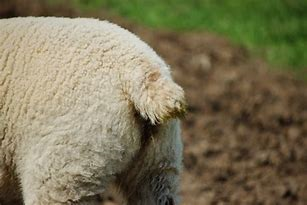

Docking is the intentional removal of part of an animal’s tails or, sometimes, ears. The term cropping is more commonly used in reference to the cropping of ears, while docking more commonly but not exclusively refers to the tail. The term tailing is also commonly used. The term arises because the living flesh of the tail, from which the animal’s tail hairs grow, commonly is known as the dock.
Many breeds of sheep have their tails docked to reduce the buildup of faeces which can encourage fly strike. Also used for this purpose is mulesing. Docking also makes it easier to view a grown ewe’s udders to detect potential problems.
While tail docking is an effective preventive method in some cases, if it is not carried out correctly it may result in other problems such as Ill thrift or rectal prolapse.In lambs, tail docking at the distal end of the caudal folds tends to minimize docking effects on incidence of rectal prolapse.
Docking at that length has been recommended by the American Veterinary Medical Association.In the UK the law states that for sheep docked tails should at a minimum cover the anus in male lambs, and the vulva in female lambs. These minimum lengths are also recommended in Canada
Depending on the animal and the culture, docking may be done by cutting (knife or other blade), searing (gas or electrically heated searing iron), or constriction methods, i.e. rubber ring elastration.
The Canadian Veterinary Medical Association indicates that pain, stress, recovery time and complications associated with docking of livestock will be minimized by docking when animals are under one week of age.However, docking of lambs within 24 hours of birth is not recommended, as it may interfere with ingestion of colostrum and/or formation of the maternal bond.In the UK the law requires that docking on sheep using constriction methods must be performed within the first week of the animal’s life.
The UK Farm Animal Welfare Council has noted that this limitation can be problematic in management of hill flocks where normal practice is to handle lambs as little as possible during the first week “to avoid mis-mothering, mis-adventure and injury.”
 Contact Jaguza Support
Contact Jaguza Support